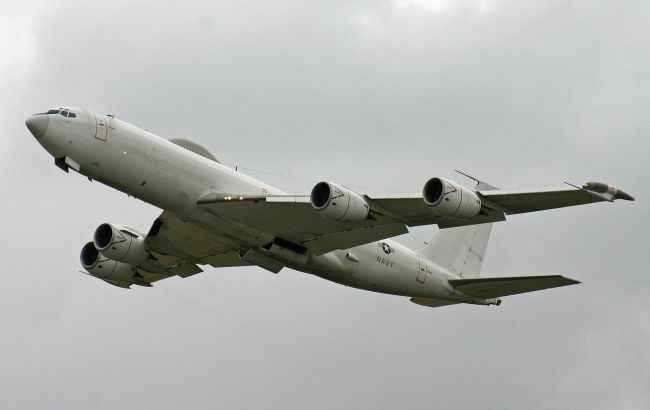US E-6B 'doomsday plane' appears near Greenland: Details
 US Navy E-6B Mercury aircraft (Photo: Wikipedia)
US Navy E-6B Mercury aircraft (Photo: Wikipedia)
The US Navy E-6B Mercury aircraft, capable of maintaining communication with nuclear submarines, conducted an unusual flight near Greenland, according to Newsweek.
On August 22, the US Navy confirmed the deployment of the E-6B Mercury airborne command post to the Pituffik Space Base in Greenland for routine operations and exercises with nuclear submarines in the Pacific and Atlantic Oceans.
“Naval Strategic Forces conduct global operations in coordination with combatant commands, services, and allies and partner nations, even in the High North,” said US Submarine Forces spokesperson Jason Fischer.
What is known about the E-6B
The E-6B is a relay aircraft and strategic airborne command post. It ensures survivability, reliability, and endurance of airborne command, control, and communication between national command authorities and US strategic and non-strategic forces.
The aircraft can transmit messages to nuclear-armed submarines beneath the ocean surface using a very low-frequency communication system with dual-wire antennas. The main antenna can be deployed up to five miles in length.
The E-6B Mercury is often referred to as the doomsday plane.
After taking office, former US President Donald Trump repeatedly stated that Greenland should become part of the US and insisted that its incorporation would happen 100%.
As RBC-Ukraine reported, in early August, Trump ordered the deployment of two nuclear submarines to the Russian coast and later confirmed that the vessels were in the vicinity of Russia.
These actions were prompted by statements from Russian Security Council Deputy Chairman Dmitry Medvedev, who, in response to Trump’s ultimatum to the Kremlin regarding the war in Ukraine, called Trump’s demands a step toward war with Russia.
RBC-Ukraine also reported that the UK will join NATO’s nuclear mission using advanced F-35A fighters with nuclear capabilities. This is part of a broader defense strategy, including reforming military capabilities in Scotland and plans to build new attack submarines aimed at strengthening readiness for potential confrontation with Russia.

